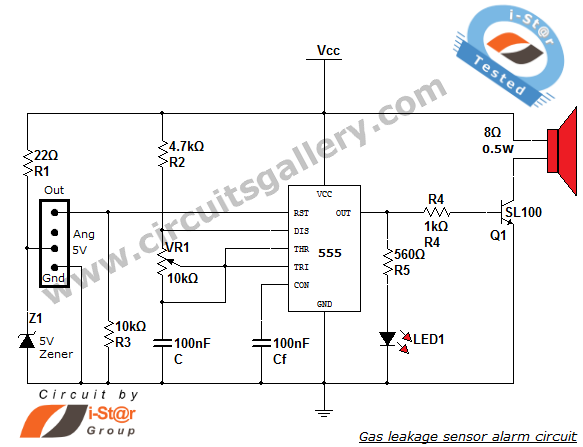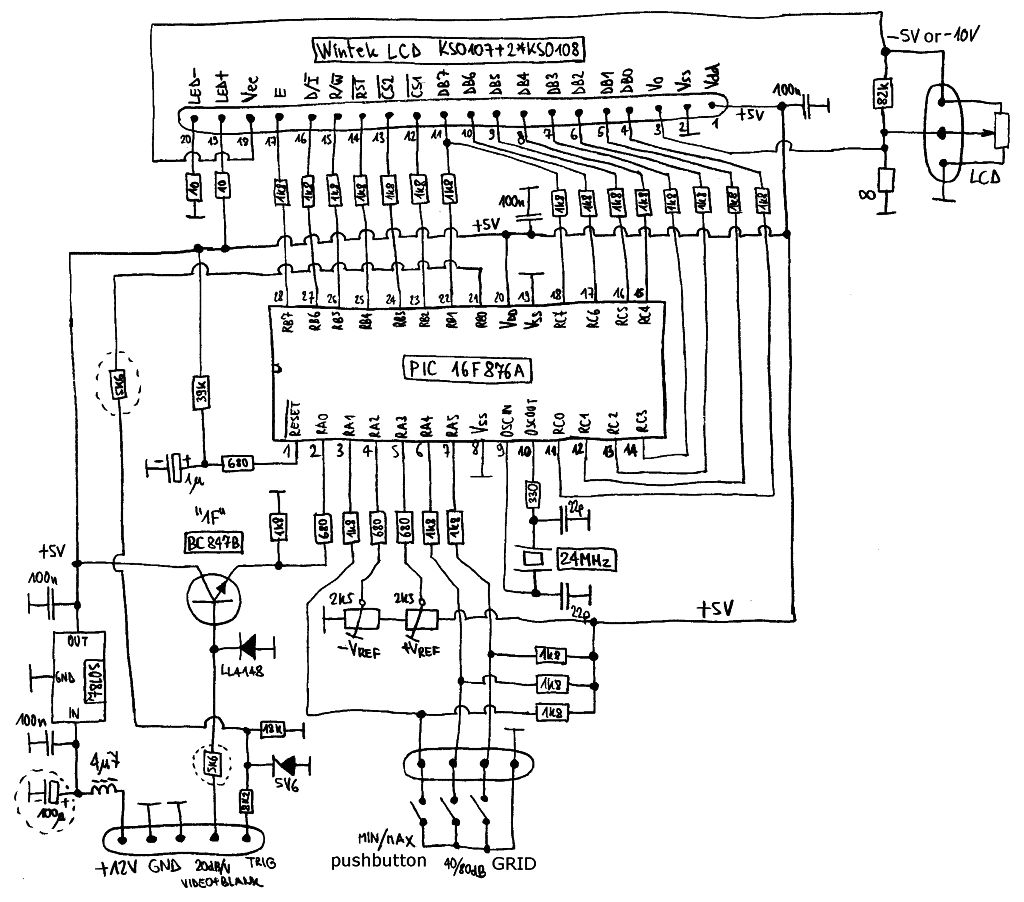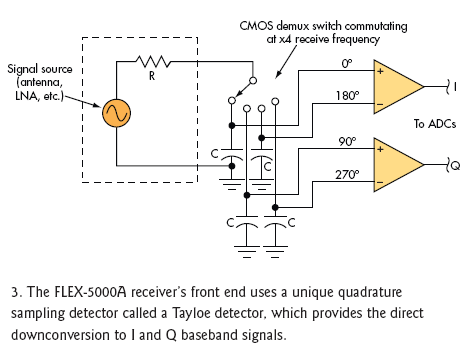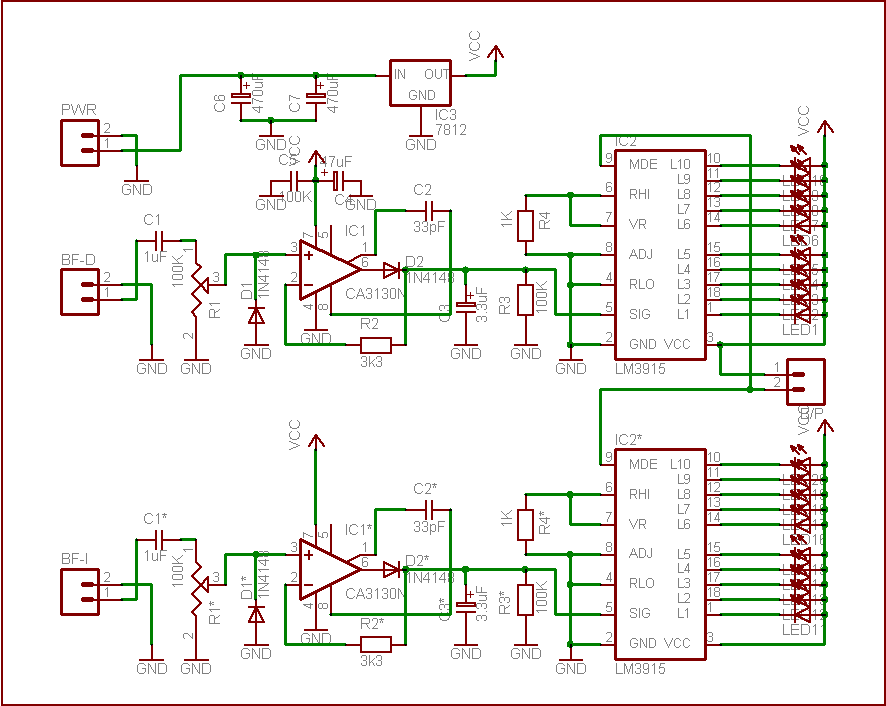
vu meter using lm3915
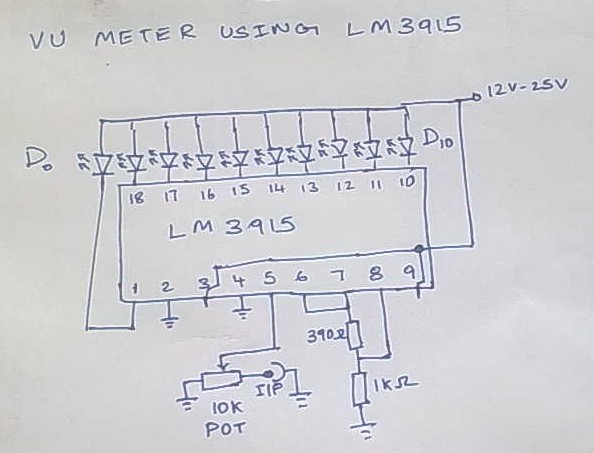
This is Version 1 of the VU meter that has been planned for construction. The final version will differ from the current one as its performance did not meet the requirements. This version cost approximately 100. The IC LM3915 was particularly difficult to find at SP Road, Bangalore, but it was eventually obtained.
The VU meter circuit utilizes the LM3915 integrated circuit, which is designed to drive a bar graph or dot display based on an analog voltage input. The LM3915 can operate in two modes: bar mode and dot mode, allowing flexibility in visual representation. The input signal typically comes from an audio source, where it is processed to produce a voltage level proportional to the audio signal's amplitude.
In constructing the circuit, a power supply of 12V DC is often used, as it is within the operating range of the LM3915. The input signal is usually coupled through a capacitor to block any DC offset, ensuring that only the AC component of the audio signal is represented on the display. A resistor network may be employed to set the reference voltage for the LM3915, allowing for calibration of the meter's response to different signal levels.
The display can consist of either LEDs or an LCD, depending on the desired visual effect. For a bar graph display, multiple LEDs are arranged in a row, lighting up incrementally as the input signal increases. In dot mode, only one LED lights up at a time, indicating the peak level of the input signal.
In terms of construction challenges, sourcing the LM3915 may be a significant hurdle, as noted in the original description. However, alternative ICs or methods may be explored if availability remains an issue. Additionally, the initial version may require further refinement to enhance performance, such as improving the input filtering or adjusting the reference voltage for better accuracy in signal representation.
Future iterations of the VU meter could incorporate features such as a microcontroller for more advanced signal processing, allowing for programmable settings and additional functionalities like peak hold or averaging of the signal levels. Overall, the design and implementation of a VU meter using the LM3915 can serve as a valuable project for understanding audio signal processing and visual representation in electronic circuits.This is Version 1 of the VU meter which i have planned to built The final version will be different from the present one as its performance did not meet requirements .. This version cost me about 100? The IC lm 3915 was particularly hard to find at Sp road,Banaglore eventually got it after a.. 🔗 External reference
The VU meter circuit utilizes the LM3915 integrated circuit, which is designed to drive a bar graph or dot display based on an analog voltage input. The LM3915 can operate in two modes: bar mode and dot mode, allowing flexibility in visual representation. The input signal typically comes from an audio source, where it is processed to produce a voltage level proportional to the audio signal's amplitude.
In constructing the circuit, a power supply of 12V DC is often used, as it is within the operating range of the LM3915. The input signal is usually coupled through a capacitor to block any DC offset, ensuring that only the AC component of the audio signal is represented on the display. A resistor network may be employed to set the reference voltage for the LM3915, allowing for calibration of the meter's response to different signal levels.
The display can consist of either LEDs or an LCD, depending on the desired visual effect. For a bar graph display, multiple LEDs are arranged in a row, lighting up incrementally as the input signal increases. In dot mode, only one LED lights up at a time, indicating the peak level of the input signal.
In terms of construction challenges, sourcing the LM3915 may be a significant hurdle, as noted in the original description. However, alternative ICs or methods may be explored if availability remains an issue. Additionally, the initial version may require further refinement to enhance performance, such as improving the input filtering or adjusting the reference voltage for better accuracy in signal representation.
Future iterations of the VU meter could incorporate features such as a microcontroller for more advanced signal processing, allowing for programmable settings and additional functionalities like peak hold or averaging of the signal levels. Overall, the design and implementation of a VU meter using the LM3915 can serve as a valuable project for understanding audio signal processing and visual representation in electronic circuits.This is Version 1 of the VU meter which i have planned to built The final version will be different from the present one as its performance did not meet requirements .. This version cost me about 100? The IC lm 3915 was particularly hard to find at Sp road,Banaglore eventually got it after a.. 🔗 External reference
